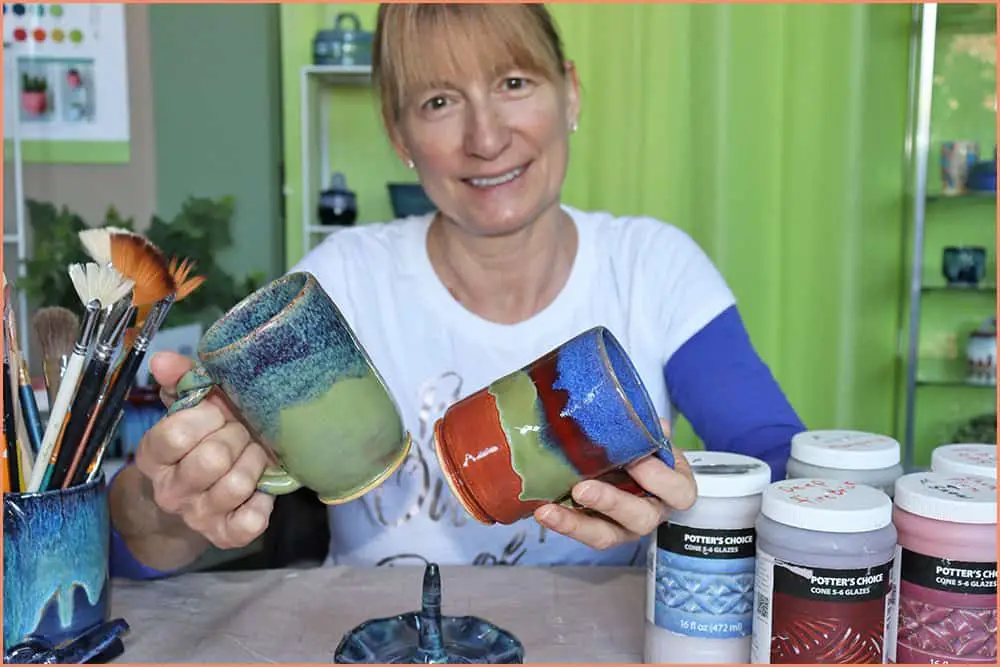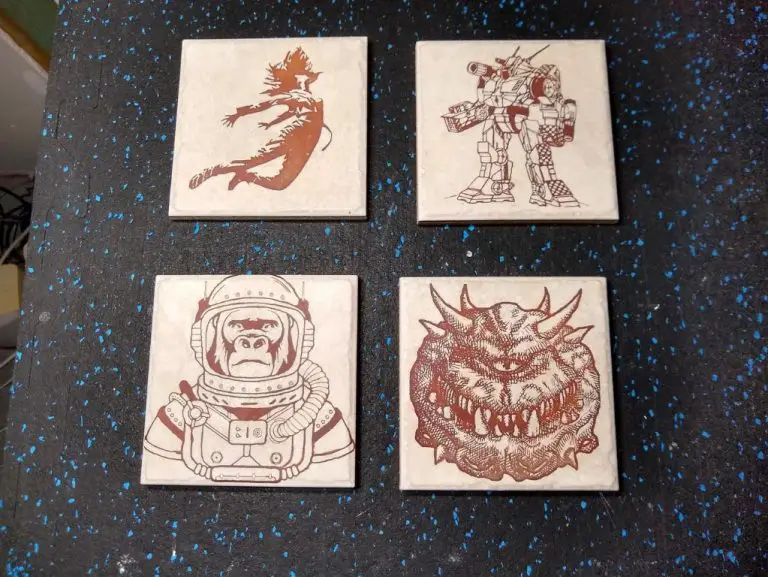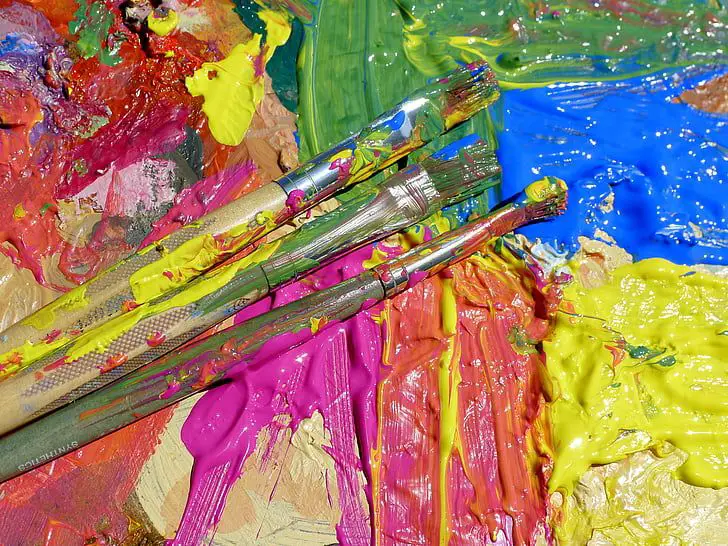What Is Glaze On Pottery Terms?
What is Glaze?
Glaze is a vitreous coating applied to ceramic wares like pottery, tile, and sanitaryware. The purpose of glaze is to seal the porous surface of the pottery to make it less permeable and give it an attractive, glass-like finish.
Glazes consist of a mixture of silica, fluxes, and various other ingredients. Silica, often in the form of silica sand, quartz, or frit, provides the glassy quality. Fluxes such as soda ash, potash, and borax lower the melting temperature of the glaze so it can fuse and flow smoothly at pottery firing temperatures. In addition to these main ingredients, glazes may also contain clays, alumina, colorants, and other additives to modify their working properties and fired appearance.
When applied to bisqueware pottery and fired in a kiln, the glaze melts to form a non-porous coating that adheres to the clay body. The firing fuses the glaze ingredients and bonds them to the clay through a glass matrix, resulting in a smooth, durable surface that adds both beauty and functionality.
Types of Glazes
There are several main categories of glazes based on the temperature they require to mature and fuse properly with the clay body. The main categories are low-fire, mid-range, and high-fire glazes.
Low-fire glazes mature at cone 04-02 which is about 1,750-1,900°F. They are characterized by bright colors and a glossy surface. Common low-fire glaze types include majolica, raku, and low temperature leadless glazes like Duncan’s LXG glazes (Pottery Creative, 2023).
Mid-range glazes mature between cone 4-7 which is about 2,050-2,270°F. They produce deeper, earthier colors compared to low-fire glazes. Popular mid-range glaze types are temmoku, shino, copper red, and ashm glazes (YouTube, n.d.).
High-fire glazes mature above cone 8 which is over 2,300°F. They create very durable glazes that grip the clay body tightly. Typical high-fire glazes are temmoku, celadon, copper red, and tenmoku (Spinning Pots, n.d.).
The different glaze types have unique characteristics in terms of color, texture, and surface effects. For example, raku glazes like crackle glazes produce distinctive cracking patterns. Shino glazes are known for their orange peel-like surface. Ash glazes create a pitted orange peel effect. Knowing the properties of each glaze type allows potters to select the appropriate glaze for their project.
Glaze Ingredients
Glazes are made from a mixture of ingredients that serve different purposes in the chemical makeup and physical characteristics of the finished glaze. Here are some of the most common ingredients used:
- Silica – The main glass former, usually in the form of silica sand, quartz, or flint. Provides the glassy matrix.
- Alumina – Aluminum oxide, improves glaze durability and stability.
- Flux – Lowers melting temperature, allows glaze to become glassy at kiln temperatures. Common fluxes are soda ash, potash, borax.
- Clay – Provides alumina and silica. Can help suspend colorants.
- Zinc oxide – Adds gloss and transparency.
- Calcium carbonate – A flux, helps control thermal expansion.
- Dolomite – Supplies magnesium, an important oxide.
- Colorants – Metal oxides that provide color, such as cobalt (blue), copper (green), iron (brown), manganese (purple).
The ingredients must be combined in the right proportions to achieve the desired chemical composition for melting, firing, color, and texture. Testing is key to achieving the characteristics and aesthetics the potter wants.
Glaze Chemistry
The chemical composition of glazes is complex and achieving the desired results involves understanding the interactions between different ingredients. Glazes are made up of fluxes, stabilizers, and modifiers. Common fluxes include soda, potash, lead, borax, and feldspar which lower the melting temperature of the glaze. Silica and alumina act as stabilizers, providing an acidic structure. Modifiers like calcium, zinc, and magnesium oxides help the glaze melt and flow properly at various temperatures.
During firing, the fluxes melt and dissolve the silica and alumina particles, forming a glassy matrix. The melting point, texture, and appearance of the glaze depend on the proportions of fluxes, stabilizers and modifiers. Too much flux can cause the glaze to become under-fired and prone to leaching. An excess of stabilizers leads to a glaze that is too refractory and resists melting. The modifiers must be balanced to help the glaze mature at the desired temperature. Understanding these complex interactions is key to creating a stable, brilliant glazed surface.
Glaze chemistry involves balancing multiple factors – calculating shrinkage, thermal expansion, color responses and more. With experience and systematic testing, potters gain deep knowledge of how ingredients interact and how to formulate glazes with the visual qualities they want.
Glaze Textures
Glazes can have a wide variety of textures and finishes depending on the ingredients, application method, and firing process. Some common glaze textures include:
Smooth – A glossy, polished surface. Smooth glazes usually have high clay and flux content. They are typically applied in thinner layers by spraying or dipping.
Orange peel – A slightly bumpy texture resembling the surface of an orange peel. Usually occurs when the glaze is too thick or applied unevenly.
Crawling – When glaze pulls back from areas of the clay surface creating bare patches. Can be caused by dirt on the clay body or incompatibility between glaze and clay.
Breaking/Crazing – Fine cracking in the glaze surface. Results from the glaze expanding and contracting at a different rate than the clay body during firing.
Crystalline – Rough stone-like texture from crystal growth. Achieved through specialized glaze recipes and controlled firing.
Rustic – A subtly irregular look. Can be created using brushwork, distressed layered glazes, or particles in the glaze.
The glaze application technique plays a key role in developing texture. Brushing, pouring, and sponging can create fluid or irregular effects. Spraying produces an even, smooth glaze. Specific textures can also be shaped by the clay surface beneath the glaze.
Glaze Colors
There are several ways of achieving vibrant colors in ceramic glazes. The main methods include using colored oxides, stains, underglazes, and overglazes. Specific glaze colors that potters work with include:
Blues – Cobalt oxide added to a glaze produces blues from pale sky blue to midnight blue. Copper oxide can also create blue colors. According to this article on Ben Owen III’s pottery, he developed a range of blue glazes inspired by the local North Carolina landscape.
Greens – Chromic oxide, copper oxide, or copper carbonate create green glaze colors ranging from pale celadon to deep forest green. Glaze chemisty factors like increasing zinc content can also push blues into greens.
Yellows – Antimony oxide and iron oxide create yellows from buttery to mustard. According to this Pin on Pinterest, new vibrant yellow glaze colors were trending in handmade pottery.
Reds – Iron oxide is the main ingredient for developing rich reds in glazes. The iron acts as a chromophore, adding increasing color saturation depending on factors like clay body, firing temperature, and glaze chemistry. Copper oxide can also produce red glazes.
Purples – Manganese dioxide combined with zinc is a common method of producing purple glazes. Cobalt can also push blue glazes toward lavender and violet shades. Flashing (re-oxidizing) copper red glazes is another technique for achieving purples.
Oranges – Iron oxide is also used to produce orange glazes, ranging from peach to rust red-orange. Specific clay bodies high in iron can help punch up orange glaze colors.
Browns – Iron oxide naturally produces warm browns in glazes, from tan to chocolate brown. Manganese dioxide can also create brown tones.
Neutrals – Titanium dioxide and zirconium silicate are often used to produce neutral glaze colors like white, cream, gray, and black.
Glaze Application
There are several common techniques for applying glaze to pottery:

Brushing
Applying glaze with a brush is a simple and accessible method. Good quality brushes like soft bristle brushes allow for even glaze coverage over flat and curved surfaces (Source). However, brushing can result in uneven glaze thickness and brush strokes may be visible. Multiple thin coats are recommended.
Dipping
Dipping involves fully submerging ware into a container of glaze. This allows the glaze to cover all surfaces evenly. Dipping is best for pieces with simple shapes that can be easily submerged. Complex pieces with handles or feet may not dip evenly. Glaze thickness is controlled by the viscosity of the glaze and duration of dipping (Source).
Pouring
Pouring thinned glaze directly onto ware can cover all surfaces evenly in a single step. This method requires glazes formulated for pouring and sufficient thickness of clay walls to resist cracking from the weight of glaze. Pouring allows fast glazing of high quantities of ware (Source).
Spraying
Spray glazing with an airbrush or spray gun allows thin, even glaze coverage. It is efficient for high quantities of ware. Drawbacks are overspray and the required spray equipment investment. Masking or removing ware parts not intended for glazing is required.
Glaze Firing
Proper glaze firing is crucial for achieving the desired results with pottery glazes. Glazes must be fired to high temperatures, usually between 2,200°F and 2,400°F, in order for the ingredients to melt and fuse to the clay body beneath (The Pottery Wheel, n.d.).
There are several factors to consider when glaze firing:
Firing Temperature: Each glaze has an optimal firing temperature or range at which it turns out best. Going under or over the ideal temperature can lead to crawling, pitting, or other defects (Oxford Clay, 2023).
Firing Cycles: Glazes are usually fired according to specific cycles that control the rate of heating up and cooling down. A common cycle involves a period of rapid temperature rise followed by a hold at peak temperature before a gradual cool down. The cycle affects the glaze chemistry and appearance (The Pottery Wheel, n.d.).
Atmosphere: Firing in oxidation creates vibrant colors in glazes, while reduction firing can create interesting effects like metallic lusters. The kiln atmosphere is controlled by managing airflow during firing (The Pottery Wheel, n.d.).
Test tiles are often used to dial in the optimal firing schedule. Paying close attention to firing temperature, cycles, and atmosphere helps potters achieve the desired glaze surfaces and effects.
Glaze Defects
There are several common glaze flaws and issues that can occur during the glazing and firing process. Some of the most prevalent glaze defects include:
Crawling
Crawling occurs when the glaze pulls back into beads and creeps away from areas of the pottery surface, leaving bare clay behind. This is often caused by poor glaze and clay compatibility or by contaminants on the clay surface that repel the glaze, such as dust or oil from hands. Solutions include adjusting the glaze recipe, cleaning the clay thoroughly before glazing, or using a crawling glaze additive[1].
Crazing
Crazing refers to a network of fine cracks that develops in the glaze after firing. It’s typically caused by Clay and glaze expanding and contracting at different rates during temperature changes. To prevent crazing, potters can better match the clay and glaze thermal expansion, apply a thinner glaze layer, or add zirconium silicate to strengthen the glaze[2].
Blistering
Blisters form as bubbles under the glaze surface. Gas bubbles from organic matter in the clay getting trapped under the glaze is a common cause. Applying glaze to dry, bone-dry clay helps avoid blisters, as does using a thinner glaze layer and adjusting the firing schedule if blisters appear[3].
Pinholes
Tiny holes or indentations in the glaze are known as pinholes. These often result from air bubbles in the glaze or gases escaping through the glaze during firing. Using a thinner glaze coat and removing glaze from the bottom rim can help minimize pinholes. While aesthetically unappealing, minor pinholing is generally safe for functional pottery[4].
Shivering
Shivering occurs when flakes and chips of glaze detach themselves from the clay surface. Thermal expansion mismatch between the clay and glaze frequently causes this. Altering the glaze recipe, switching clay bodies, or adjusting the firing schedule can help resolve shivering issues.
With patience and testing, most common glaze flaws can be corrected by tweaking the clay, glaze, or firing process.
[1] https://ceramicartsnetwork.org/daily/article/How-to-Correct-Five-Common-Ceramic-Glaze-Defects
[2] https://www.reddit.com/r/Pottery/comments/1ang0q1/glaze_defects/
[3] https://thepotterywheel.com/are-pinholes-in-glaze-food-safe/
[4] https://thepotterywheel.com/are-pinholes-in-glaze-food-safe/
Innovations in Glazes
Potters have continually sought to innovate with new glaze materials and techniques to achieve unique effects. In the 1960s, Scandinavian ceramicists like Gunnar Nylund pioneered experimental approaches, using materials like stains, oxides, and thermal shock to create distinctive glazes.
Nylund was known for his striking vertical dripped glazes that resembled lava flows. He achieved these effects by layering and blending different glazes, allowing them to interact unpredictably in the kiln. His innovations with materials like copper and iron oxides produced glazes with vivid colors and textures.
Other potters have continued to push boundaries with experimental raku and soda firing techniques. Raku involves removing pots from the kiln while red-hot to produce cracked crazed effects. Soda firing introduces soda ash into the kiln which causes the glaze to bubble and pool in organic shapes.
New materials like mason stains, frits, and commercial underglazes have expanded the palette of colors and visual possibilities. Potters today continue to innovate by layering and combining these materials to achieve original glazes with depth and complexity.
Sources:
https://www.worthpoint.com/worthopedia/stunning-scandinavian-gunnar-nylund-nymolle-9


